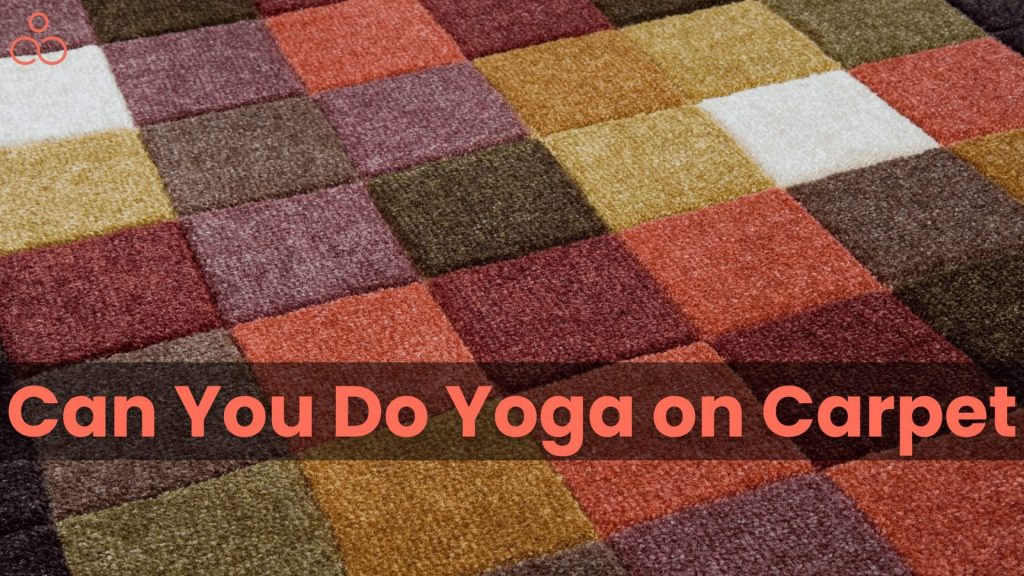A common question among those who practise Yoga is can you do Yoga on carpet without getting hurt? Some claim it’s impossible, while others say it’s easy and safe. The truth is that there are both pros and cons to doing Yoga on carpet, and it’s important to consider them before making a decision. So, can you do Yoga on top of a carpet? Read on to find out!
Can you do Yoga on carpet?
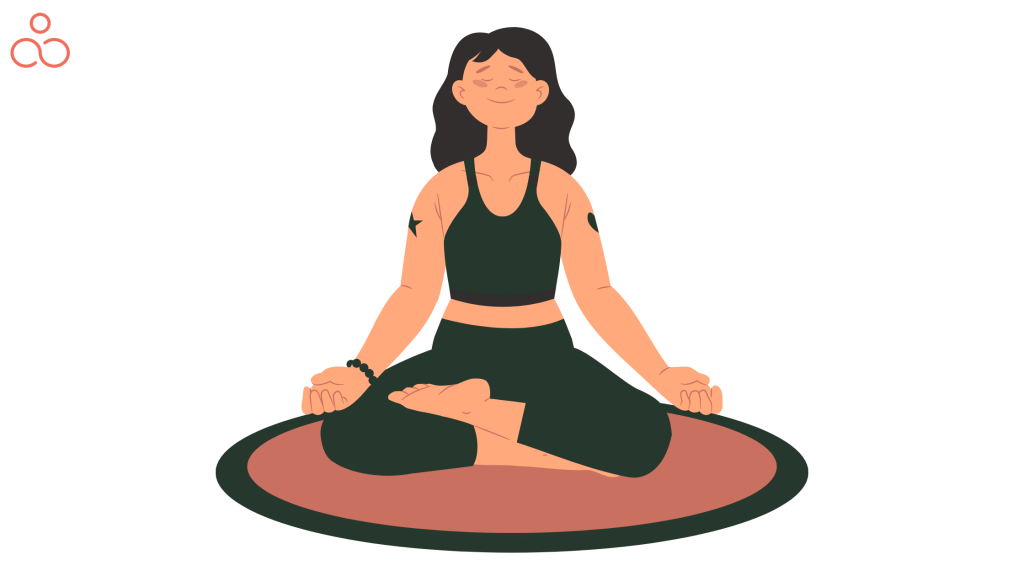
Yes, you can definitely do Yoga on the carpet! In fact, practising Yoga on a carpet is way better than doing it on a hard surface. The padding from the carpet cushions your joints and can minimise the impact of difficult poses on your knees and wrists. Also, a carpet can ensure better grip, reducing the chances of slips and falls, thereby allowing you to fully focus on your practice. Moreover, it provides you with maximum comfort and warmth, helping you relax and create a calming atmosphere. Thus, performing Yoga on a carpet is an excellent and secure way to practise Yoga at home.
Yoga on carpet with mat
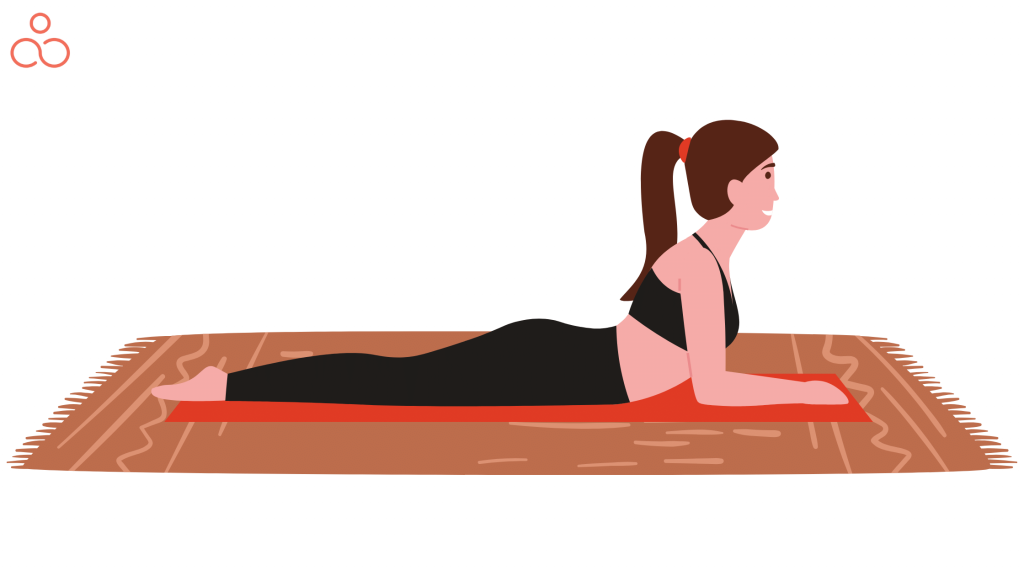
Yoga on carpet with mat is a great way to practise Yoga in the comfort of your own home. It allows you to practise Yoga without having to purchase a Yoga mat and it also allows you to practise without worrying about slipping and sliding on the floor. Although a Yoga mat is important as it helps practitioners to keep their hold strong on the surface due to its anti-slipping nature, the carpet also provides some cushioning and helps to reduce stress on your joints. Overall, practising Yoga on carpet with a mat can be a great way to practise Yoga in the comfort of your own home. Carpets can also be used as a makeshift Yoga mat, but it is important to note that carpets can be slippery, so it is important to use a Yoga mat or a carpet that has a good grip or traction to it.
Which type of Yoga mat is most suitable for use on carpeted floors?
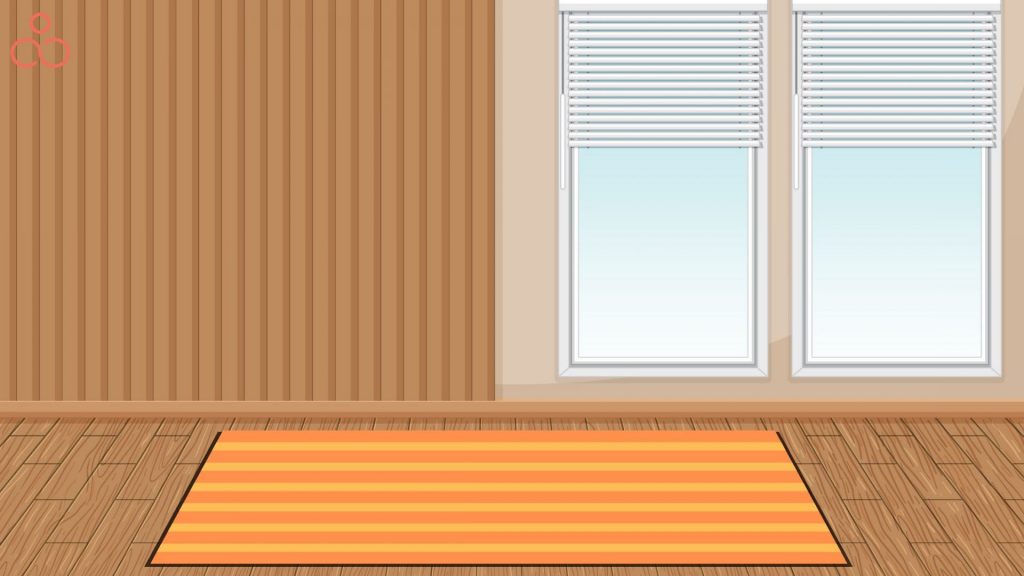
If you happen to have a carpeted floor and need a Yoga mat, then we have few recommendations for you:
- Firstly, use a mat made of natural cork or rubber as it ensures good grip and helps you to avoid slipping.
- In addition, it’s better to opt for a denser mat as it can conceal any bumps and offer a stable surface.
- Lastly, choosing a moderately thick mat can prevent crumpling during your practice and maintain a steady form even during active Yoga flows.
What is the best way to keep a Yoga mat from slipping on a carpet?

If you’re having difficulty keeping your Yoga mat in place on a carpeted floor, don’t worry – there are two simple solutions available to ensure that your mat stays put during your Yoga sessions. Before trying these techniques, however, make sure that your carpet is stable.
The first solution is to use rug pad grippers, which are typically intended to prevent carpets from bunching and sliding on wooden or tiled floors. To keep your Yoga mat from slipping, simply attach four grippers to the top of your carpet where the four corners of your Yoga mat would go. This is a stable and effective solution.
The second option is to consider purchasing a portable Yoga floor, such as the Lifeboard, which offers good traction on carpets and carpeted floors. If you’re feeling creative, you can also construct your own solid platform to place underneath your Yoga mat.
Combination of Yoga mat and carpet
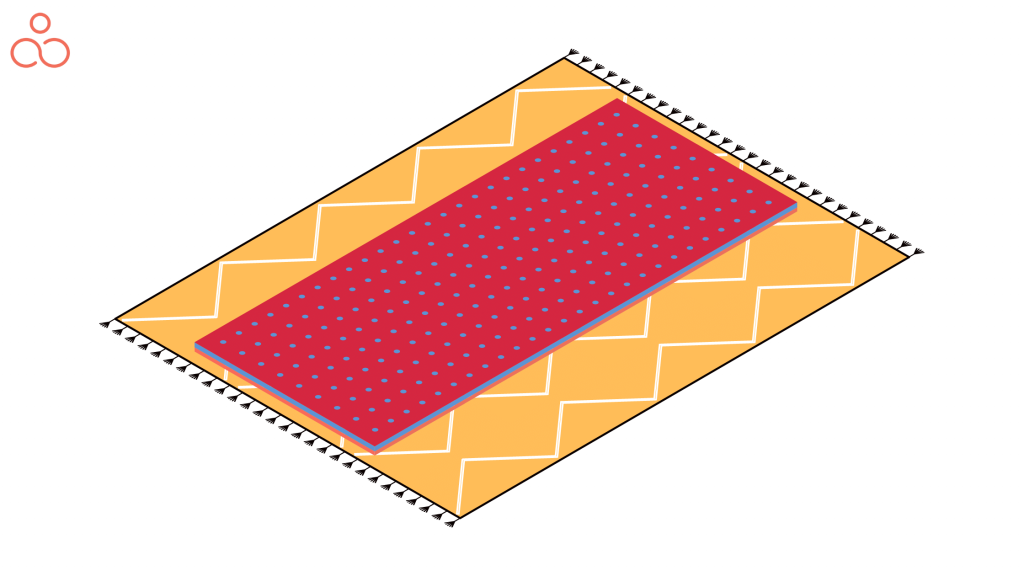
The perfect combination of a Yoga mat and carpet is one that provides a comfortable and safe surface for you to practise on.
- The Yoga mat should provide cushioning and grip, while the carpet should keep you from slipping or sliding during practice. The carpet should also provide enough support to keep your joints and spine safe.
- When choosing a Yoga mat and carpet, make sure to consider the thickness, texture, and material of both.
- The thickness of the Yoga mat should be thick enough to provide cushioning and comfort, while the carpet should be thick enough to provide support.
- The texture of both should be non-slip, and the material should be breathable and moisture-wicking.
- By finding the perfect combination of a Yoga mat and carpet, you can practise safely and comfortably.
Yoga on carpet without mat
Yoga on carpet without a mat can be tricky, but it is possible to practise Yoga without a mat. To do so, you’ll need to be careful when transitioning between poses, as the rug can slip and cause you to lose balance. You should also make sure that your rug is clean and free of debris, as this could cause a distraction during your practice. Additionally, it’s important to use towels or a blanket or two for extra support and cushioning. Lastly, the carpet should have a good grip so that your poses and transitions stay in place. With a little extra mindfulness and effort, Yoga on carpet without a mat can be a great option for your practice.
Points to keep in mind while practising Yoga without a mat
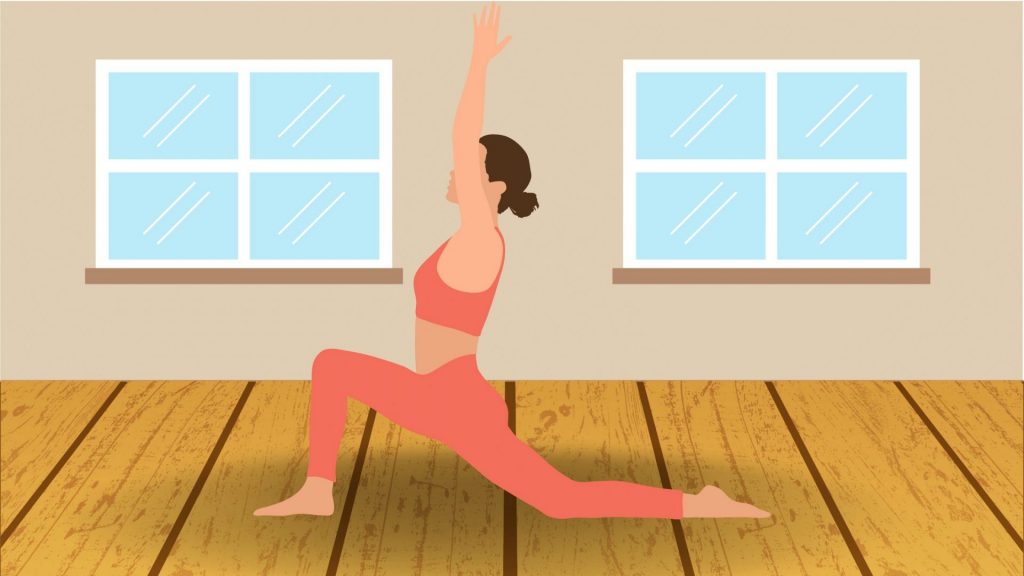
Based on the instructions provided, below is the rephrased content of the original paragraph in bullet points while maintaining the same structure and content:
- Soft and smooth carpets pose difficulty in some Yoga poses since hands and feet tend to slip, particularly in Downward Dog, which can be frustrating and hazardous.
- Carpets can hinder the practice of balancing postures and can also cause skin irritation based on the type of carpet, either because the carpet is too fluffy or has very short fibres.
- Carpeted floors are not hygienic for Yoga practice, particularly if the carpet is not regularly cleaned, as it can harbour dust, dirt, and bacteria that cause nasal irritation and detract from relaxation.
- Sweat exacerbates the problem of carpet hygiene; the more one perspires, the dirtier the carpet becomes.
How to practise Yoga without a mat on a carpet?
Here are 4 ways to practise Yoga without a mat on a carpet:
- Use a towel or blanket as a substitute for a Yoga mat. Fold the towel or blanket and place it on your carpet to provide a soft, non-slip surface for your practice.
- Try practising standing postures and balancing poses. These poses don’t require you to be on the ground and can be done on the carpet.
- Focus on gentle and slow movements. This can help reduce the impact on your joints and make it more comfortable to practise Yoga without a mat.
- Consider practising on a bare carpet. If your carpet is clean and free from debris, practising Yoga directly on the carpet can be an option.
Why shouldn’t you put your Yoga mat directly on the carpet?
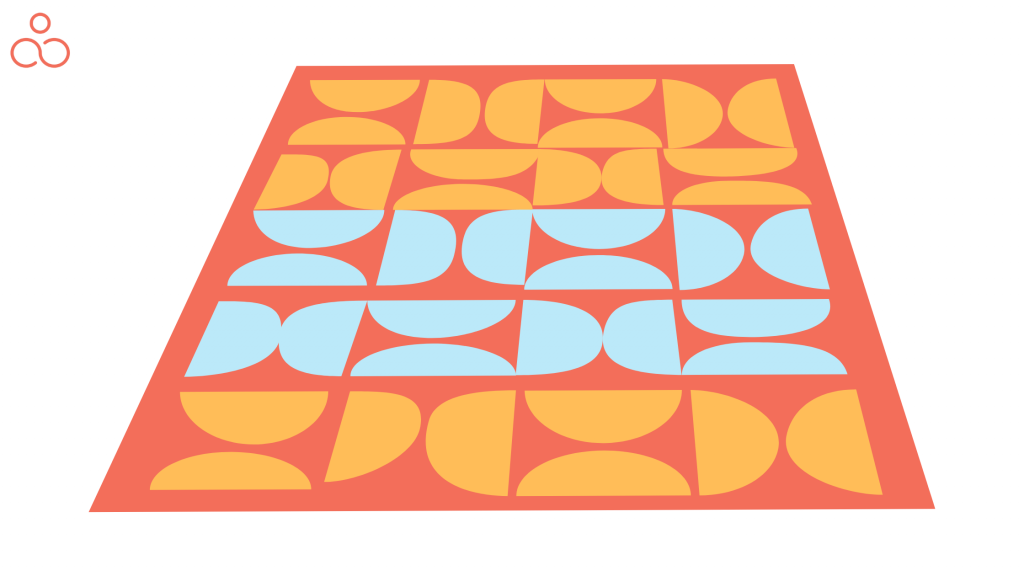
Here are the 3 key reasons why you shouldn’t put your Yoga mat directly on the carpet:
Alignment
A Yoga mat provides a stable and even surface to practise Yoga on. Placing your mat directly on the carpet can lead to unevenness, which can negatively impact your alignment and posture.
Wrist injuries
Placing your mat on a plush or uneven surface, like carpet, can increase your risk of developing wrist injuries. The lack of stability can cause your wrists to bend in awkward ways, leading to pain and strain over time.
Stability and focus
Practising Yoga on a stable surface, like a Yoga mat, can help improve your balance and focus. Placing your mat directly on the carpet can cause unnecessary distractions and make it more difficult to stay grounded and centred during your practice.
Can carpet be the perfect alternative to Yoga mat?
While a regular carpet may not provide the same comfort and support that a Yoga mat does, there are benefits that make it a viable choice. Carpets are usually thicker and more absorbent than mats and can provide a great deal of cushioning and warmth during the practice of Yoga. Carpet is also easier to clean and maintain than a Yoga mat, making it a great option for those who want to practise Yoga without having to worry about a mat slipping or needing to be replaced. With the right carpet, you can still enjoy a comfortable and supportive Yoga practice.
Pros and cons of doing Yoga on a carpet without a Yoga mat
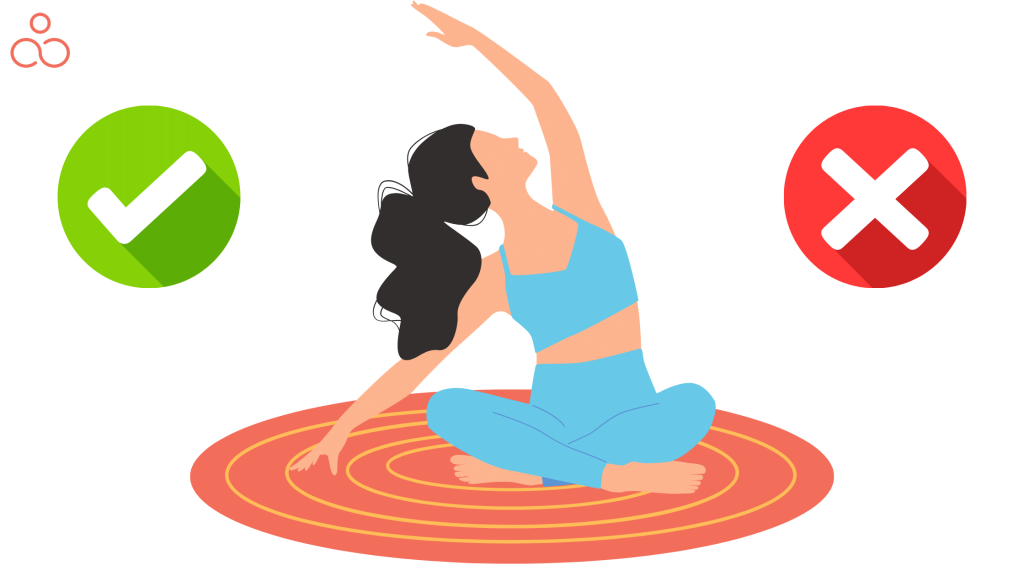
While doing Yoga on a carpet without a Yoga mat may seem like a good idea, there are pros and cons that you must consider:
Pros:
- Cost-effective
Practising Yoga on a carpet without a mat can save you money as Yoga mats can be expensive.
- Comfort
Some yogis prefer the softness of a carpet compared to the hardness of a Yoga mat.
- Traction
Carpets can provide better traction for some Yoga poses compared to slippery Yoga mats.
- Gentle
Exercising on soft surfaces is gentle on the joints, especially the knees.
- Relaxation
When you exercise on a cushioned surface, it promotes relaxation, allowing for easier release of tension.
- Balance
Over time, working out on challenging, soft surfaces can improve balance and stabilising skills.
Cons:
- Hygiene
Carpets can absorb sweat and bacteria, making them unsanitary and potentially causing skin infections.
- Slippery
Carpets can be slippery, particularly with smooth or synthetic surfaces, which may cause injuries.
- Durability
Carpets may wear out faster than Yoga mats due to regular use and impact from your body weight.
- Burns
Getting carpet burns during Yoga is far from ideal as it becomes tricky to focus and concentrate on your poses with the added discomfort of the carpet.
- Effort
Staying upright and preventing yourself from slipping becomes more critical, and this requires greater effort, even if you’re already flexible.
- Challenging
Carrying out handstands, in particular, becomes a lot more challenging with a carpet underneath you.
Convenient Yoga poses to do on a carpet
Yoga can be a great way to reduce stress and relax your body and mind. It can also be a great way to stay fit and healthy. Here are 8 convenient Yoga poses that you can do on a carpet.
1. Child’s Pose
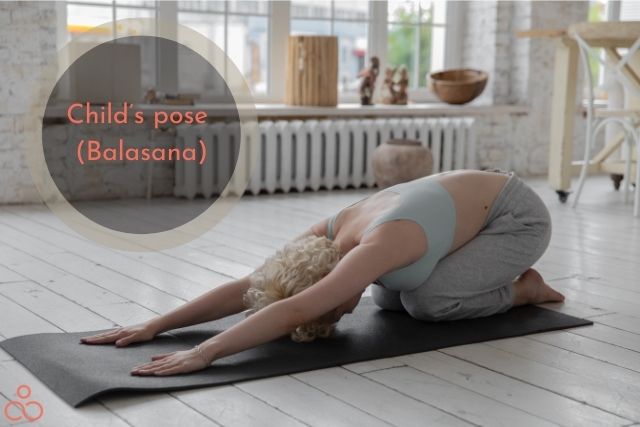
- To do Child’s Pose Yoga on carpet without a Yoga mat, start by kneeling on the carpet with your toes touching each other and your knees hip-width apart.
- Slowly lower your upper body down towards the floor, bringing your forehead to rest on the carpet. Reach your arms out in front of you and take a few deep breaths, focusing on relaxing your back and shoulders.
- Hold the pose for as long as you’d like, then slowly come back up to a kneeling position. Repeat as desired.
2. Downward Facing Dog
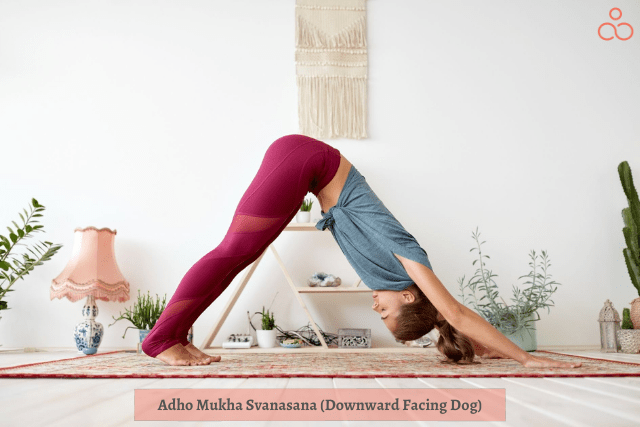
- Put your hands and feet on the carpet, making sure that the hands are shoulder-width apart and the feet are hip-width apart.
- Then lift your hips and straighten your arms and legs.
- Keep your head between your arms and gaze towards your legs. Hold for a few breaths before releasing.
3. Cobra Pose
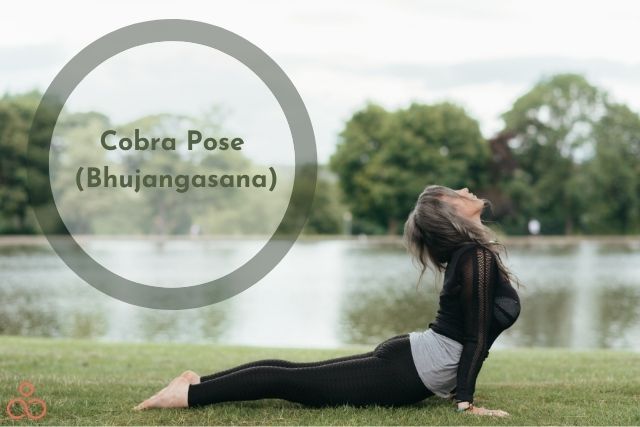
- To perform a cobra pose on carpet without a Yoga mat, start by lying on your stomach on the carpet.
- Place your hands next to your shoulders and press down into the ground.
- Lift your head and chest up, keeping your shoulders relaxed. Hold for a few breaths before releasing back down to the ground.
4. Cat/Cow Pose
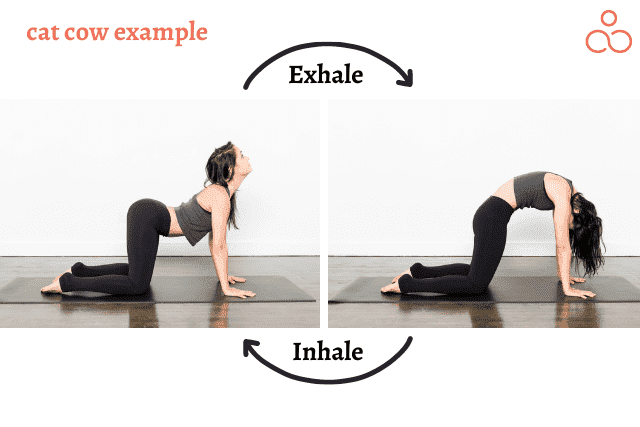
- To do cat/cow pose on carpet without a Yoga mat, start on your hands and knees with your wrists directly under your shoulders and your knees directly under your hips.
- Inhale as you arch your back and lift your head and tailbone towards the ceiling (cow pose).
- Exhale as you round your spine, tucking your chin to your chest and bringing your tailbone between your legs (cat pose). Repeat for several breaths.
5. Triangle Pose
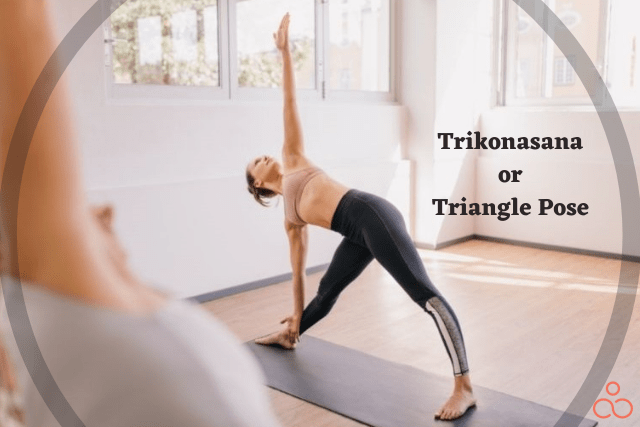
- To do Triangle pose without a mat on carpet, start by putting your feet hip-width apart and then take a step back with your left foot and angle it inward.
- Point the right foot forward and place your left hand on your left thigh and lift your right arm towards the ceiling.
- Lean your torso to the right, stretching your right arm out then down, your left hand can stay on your thigh or reach out for the floor or a block. Hold the pose for a few breaths before returning to standing and repeating on the other side.
6. Warrior II Pose
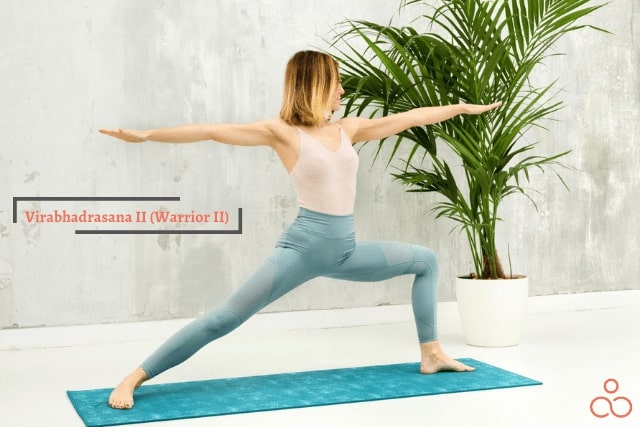
- To do warrior II pose on a carpet without a Yoga mat, stand on the carpet with your feet hip-width apart.
- Step your left foot back about 3-4 feet and turn it out to a 90-degree angle. Bend your right knee to a 90-degree angle, keeping it directly above your ankle.
- Extend your arms out to the sides, keeping them parallel to the ground. Hold the pose for several deep breaths, then switch sides.
7. Tree Pose
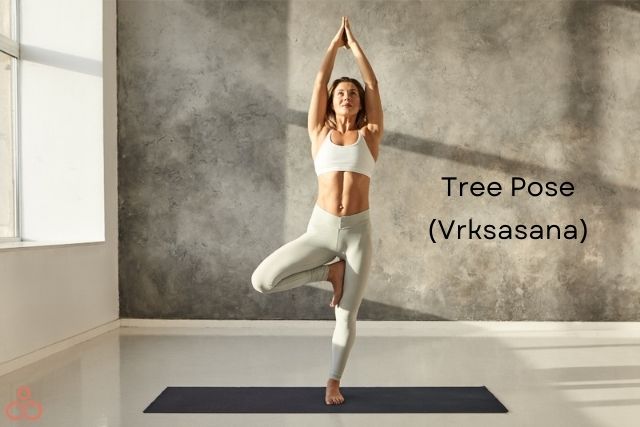
- Performing tree pose on carpet without a Yoga mat involves standing with one foot firmly planted on the ground while the other is placed on the inner thigh of the planted foot, holding the hands in prayer position, and balancing for several breaths.
- It is important to engage the core and maintain a steady gaze to help with balance.
- Avoid putting too much pressure on the knee of the planted foot and adjust the foot placement as necessary to maintain balance.
8. Bridge Pose
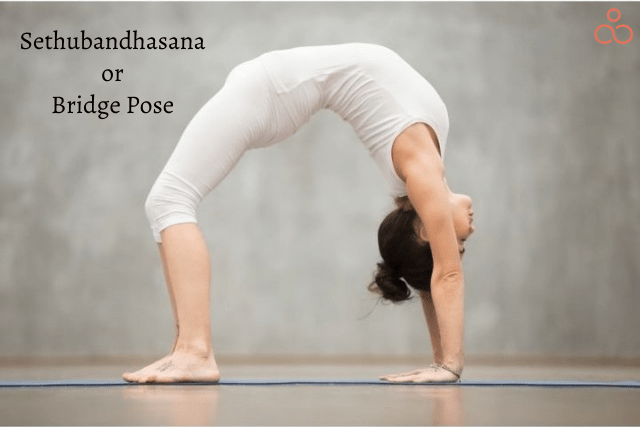
- Lie down on your back on the carpet with your knees bent and feet flat on the ground and slowly lift your hips up into the air, pressing your feet and shoulders into the ground.
- Walk your shoulder blades together under your back and interlace your fingers under your hips.
- Hold the pose for several deep breaths, then release by slowly lowering your hips back down to the ground.
Tips to do Yoga on a carpeted floor
- Yoga is an excellent way to stay active and healthy. But it can be difficult to do Yoga on a carpeted floor. Don’t worry – there are some simple tips you can use to make it easier.
- Make sure your carpet is clean and free of dust and dirt.
- Wear comfortable clothing that doesn’t stick to the carpet.
- Use a non-skid rug pad or foam tiles to create a stable surface.
- Use a Yoga block or foam roller to improve your balance.
- Use a Yoga strap or belt to improve your range of motion.
- Move slowly and mindfully to protect your joints.
- Focus on alignment and proper form to avoid injury.
- Use props such as Yoga blocks and straps to help you get into certain poses.
- Practice for shorter periods of time to avoid fatigue.
- Take breaks as needed and keep your practice enjoyable.
FAQ’s
How to Choose the Best Yoga Mat for Carpeted Floors?
Choosing the right Yoga mat for carpeted floors can be overwhelming, but there are a few key factors to keep in mind. The mat’s material, thickness, and slip-resistant properties are all important. Thick mats made of PVC, rubber, or cork offer cushioning and stability, and their slip-resistant nature is vital for safety. Be sure to check if the mat is slip-resistant and choose a thickness that suits your needs. With these tips, you can easily find the best Yoga mat for your carpeted floors.
How do you stabilise a Yoga mat on a carpet?
Stabilising a Yoga mat on a carpet can be done in a few different ways. The easiest method is to buy a mat with a non-slip base, which will help the mat remain in place on the carpet. Additionally, you can place a non-slip rug pad underneath the Yoga mat to keep it from slipping. Finally, you can place a few heavy items around the edges of the mat to keep it from sliding. All of these methods will help keep your Yoga mat stable on the carpet.
Can you buy a multipurpose carpet instead of a Yoga mat to practise Yoga?
When shopping for a multipurpose carpet, look for one that is designed specifically for Yoga practice. It should be thick and comfortable to cushion your joints, and it should also be non-slip and able to absorb sweat. Additionally, you should make sure to look for one that is easy to clean and maintain. With the right carpet, you can practise Yoga safely and comfortably.
Is it advisable to practise Yoga without a proper Yoga mat?
Practising Yoga without a proper Yoga mat may not be advisable. Without a Yoga mat, you may be at risk of slipping and falling, leading to unnecessary injury. Furthermore, the surface you’re practising on may not be as comfortable as a Yoga mat, making your practice less effective. For these reasons, it may be best to invest in a quality Yoga mat to ensure the best possible Yoga practice.
Do you need a Yoga mat if you have a carpet?
Yes, a Yoga mat is beneficial to have even if you have a carpet. Carpets are not as firm as a Yoga mat and can be distracting during Yoga practice. A Yoga mat helps to create a space that is comfortable and distraction-free, allowing for a better Yoga experience. Yoga mats also provide a surface that is better for balance and stability, which is important in Yoga practice. Additionally, Yoga mats provide cushion and support for your body, which is especially important for more advanced poses. Therefore, it is recommended to have a Yoga mat even if you have a carpet.
Is it still okay to not have a carpet if you already have a Yoga mat?
Although having a Yoga mat can be beneficial, it is not a replacement for a carpet. Carpets can provide a softer and more stable surface, especially if you are engaging in activities that require a lot of movement, such as Yoga or Pilates. Carpet can also provide cushioning and insulation, which can be beneficial if your floor is cold or hard. Depending on the style of Yoga you practise, you may find that having a carpet is of greater benefit than a Yoga mat. Ultimately, it depends on your individual needs and preferences.
Is it harder to do Yoga on carpet?
Doing Yoga on carpet can be quite difficult. The softness of the carpet may make it difficult to maintain balance while doing poses, and the texture of the carpet can make it difficult to maintain a grip. It can also be harder to transition between poses on a soft surface, as the lack of stability can make it harder to get into the desired position. However, with proper technique and focus, it is still possible to practise Yoga on carpet.
Conclusion
In conclusion, Yoga can be done on a carpet. However, it is important to remember that it may not provide the same level of cushioning and support when compared to a Yoga mat. Therefore, it is important to consider the needs of the individual before deciding whether or not to use a carpet for Yoga practice.

